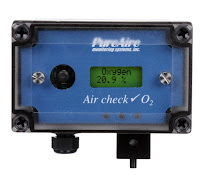Centuries ago, merchants and shippers would place a lit candle inside barrels used to store biscuits before closing the lid. The idea was that the candle flame would deplete the oxygen inside the barrel to help keep the biscuits from spoiling. These days, the candle flame has been replaced by processes called Modified Atmosphere Packaging (MAP), which can be either active or passive. By altering the atmosphere inside food product packages, or by using specialized packaging films, today’s food processors can preserve freshness and taste; extend shelf-life; prevent oxidation, which can lead to food spoilage; and protect against crushing the food contents inside the packaging, all without the use of chemical additives, stabilizers, or even candles.
Why Use Modified Atmosphere Packaging?
Consumers want food that not only looks, tastes, and smells good, but is also convenient and lasts longer than a few days after purchase. In order to satisfy consumers, food packagers need to eliminate or, at least, control factors that contribute to food spoilage, including improper levels of moisture, temperature, or light; excessive oxygen (i.e., oxidation); and the growth of microorganisms (such as mold or pathogens that can lead to food-borne illnesses).
Spoiled food means lost revenues and lower profits for producers and intermediaries, higher food prices passed on to the consumer, and an environmental burden, as food waste reportedly contributes to some 8% of global greenhouse gas emissions.
How Does MAP Work?
Active modified atmosphere packaging works by changing the atmosphere inside food packaging, typically by the introduction of gases. For instance, carbon dioxide is often used to remove oxygen from inside the packaging of breads and other baked goods, in order to keep the products from going stale, prevent mold growth, and extend shelf-life.
Packaged foods with high-fat content, such as certain cheeses or fish high in fatty acids, require a high concentration of carbon dioxide to prevent mold growth and to prevent the cheese or fish from tasting rancid. However, excessive levels of carbon dioxide can make certain foods taste sour. To prevent that from occurring, food packagers may elect to use nitrogen, or a mixture of gases, instead of carbon dioxide alone.
Conversely, while certain meat, fish, and poultry require that all or almost all oxygen be removed from inside packaging and replaced with carbon dioxide and/or nitrogen to prevent microbial growth and spoilage, oxygen is actually added to some packaged meats, low-fat fish, and shellfish to prevent fading or loss of color, as well as to inhibit the growth of certain types of bacteria.
Adding nitrogen gas to packaging not only helps salty snack foods stay crispy and fresh by displacing the oxygen inside food packaging, but it also helps protect the contents from getting crushed or broken during transport of the products from manufacturing facilities to stores and, ultimately, to consumers’ pantries.
Fresh fruits and vegetables are often packaged by using a passive form of MAP which includes specialized, permeable packaging films. The permeable film allows the fresh produce to continue to respire (that is, breathe) after being harvested, but at a much slower rate than if it were still on the plant. Low oxygen levels, combined with carbon dioxide or nitrogen, help to preserve the freshness, taste, and appearance of fresh fruits and vegetables.
Proper Monitoring Can Preserve Food Products and Protect Packaging Personnel
Balancing the correct mixture of oxygen, carbon dioxide, and nitrogen is vital when it comes to food packaging. Too much or too little of a required gas can lead to foods that have unappetizing taste, smell, or appearance and, in baked goods, can promote mold growth, and staleness.
Moreover, food packagers and others working around carbon dioxide and nitrogen need to be aware of the potential safety risks associated with these odorless and colorless oxygen-depleting gases. According to the Occupational Safety and Health Administration (OSHA), an environment in which oxygen levels fall below 19.5 percent is considered an oxygen-deficient atmosphere and should be treated as immediately dangerous to health or life. When there is not enough oxygen in the air, persons working in the affected area may become disoriented, lose consciousness, or even suffocate due to the lack of sufficient oxygen.
Because carbon dioxide and nitrogen are devoid of odor and color, individuals working around these gases might well, in the absence of appropriate monitoring equipment, be unaware that a safety risk situation has developed.
PureAire Monitors
PureAire Monitoring Systems’ Dual Oxygen/Carbon Dioxide Monitor offers thorough air monitoring, with no time-consuming maintenance or calibration required. A screen displays current oxygen and carbon dioxide levels for at-a-glance reading by food packaging employees, who derive peace of mind from the Monitor’s presence and reliable performance.
In the event of a carbon dioxide or nitrogen gas leak, and a decrease in oxygen to an unsafe level, PureAire’s Monitor will set off an alarm, complete with horns and flashing lights, alerting personnel to evacuate the area.
PureAire’s Dual Oxygen/Carbon Dioxide Monitor is well-suited for facilities where gases such as carbon dioxide and nitrogen are used. Our Dual O2/CO2 monitor includes both a non-depleting, zirconium oxide sensor cell, to monitor oxygen levels, and a non-dispersive infrared (NDIR) sensor cell, to monitor carbon dioxide levels. PureAire’s O2/CO2 monitors can last, trouble-free, for over 10 years under normal operating conditions.



























